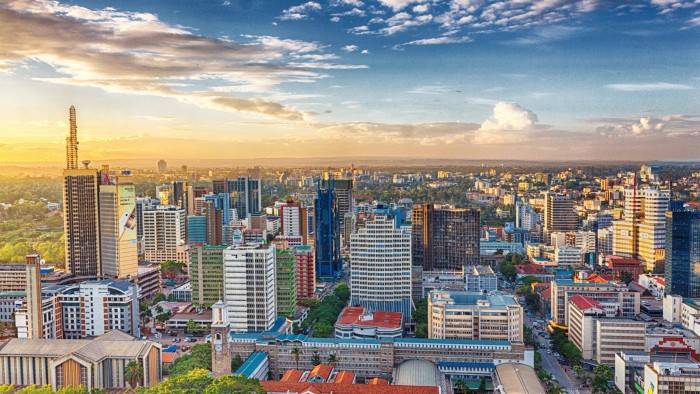Kenya seizes on bond market thaw to issue new US dollar debt

Roula Khalaf, Editor of the FT, selects her favourite stories in this weekly newsletter.
Kenya is preparing to sell US dollar debt, capitalising on a thaw in markets to refinance a $2bn bond repayment later this year that had threatened to strain the finances of east Africa’s largest economy to breaking point.
President William Ruto’s government said on Wednesday it would use the proceeds of a sale of new seven-year debt to buy back investors’ holdings of an existing bond that matures in June. The operation to defer a summer cash crunch is designed to “smooth out the maturity profile” of Nairobi’s debt, the government said. The buyback’s size will be determined by demand for the new bonds.
The plan to refinance at least part of the debt in the markets will help allay uncertainty over Kenya’s ability to repay the bond, after a sharp drop in the Kenyan shilling against the US dollar, stretched forex reserves, and fiscal pressures left the country with diminished resources.
The yield on the bond maturing in June fell by nearly 5 percentage points to 9.4 per cent, reflecting a gain in price as investors grew more confident of repayment.
Kenya was among junk-rated African countries that were priced out of debt markets by the rise in global interest rates over the past two years, and are now returning as the US Federal Reserve and other central banks signal they will soon start cutting.
Ivory Coast reopened African debt markets last month when it sold the continent’s first dollar bond in almost two years. The world’s largest cocoa producer sold $2.6bn in bonds at yields of 8.5 per cent and below.
Benin also sold its first-ever US dollar bond this week at a yield of less than 8.5 per cent, emphasising the speed at which investors have returned to lending to African governments in foreign currency.
“It is stunning how quickly Sub-Saharan Africa’s eurobond market has reopened after being entirely shut for the whole of 2023,” said Charlie Robertson, head of macro strategy at asset manager FIM Partners.
A drop in 10-year US Treasury yields, a benchmark for global borrowing rates, to about 4 per cent has made it easier for African states to issue dollar bonds at yields below the double-digit level where doubts about future debt sustainability usually price countries out of the market.
Countries such as Kenya have also retained or expanded their access to cheap loans from the IMF and development banks, helping to avoid debt defaults.
Ruto’s government has examined various options for the June bond payment in recent months, including further borrowing from development banks.
But the president signalled in January that a debt buyback financed by new issuance was back on the table. “In fact, the markets have opened for Kenya, as [they have] for most other countries,” Ruto told Reuters.
“With Benin successfully issuing, the door is wide open for Kenya,” said Søren Mørch, head of emerging markets debt at Danske Bank Asset Management, who said he expected the deal to raise about $1bn to $1.25bn, rather than the full $2bn due for repayment in June.
Comments